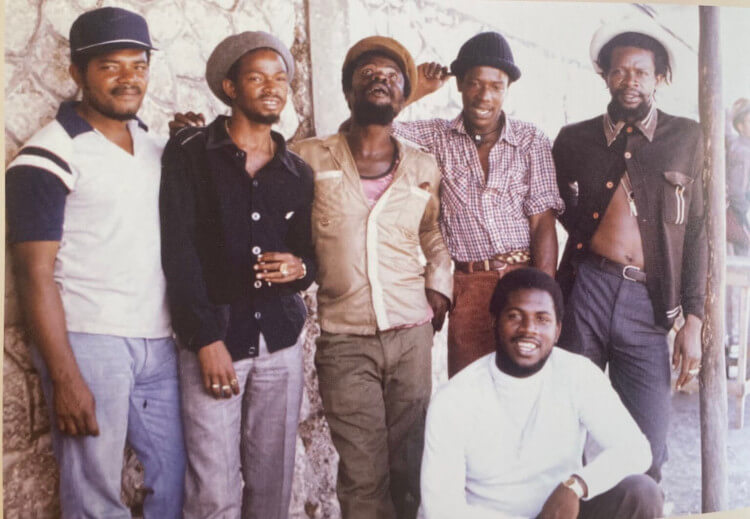The Roots Radics Band transformed reggae music in the early 1980s with a minimalistic yet powerful rhythm style. Their approach was clean, energetic, and made for a new era, moving away from the dense, layered sounds of the past.
Collaborating with innovative engineers like Scientist, Soljie, and Peter Chemist, the Radics pioneered what would become the hallmark of early 1980s dancehall. Initially, they formed to fill the gap when Sly and Robbie exited Channel One Studios, where they’d been key figures in the house band.
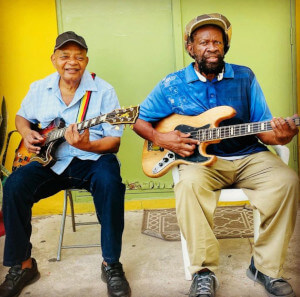
In these early days, Channel One relied on various musicians under the name The Channel One All Stars, often a rotating line-up.
The Roots Radics emerged from this setup, starting as a flexible group of available musicians for each session. However, they soon solidified into a cohesive unit that drove reggae in a new direction. Dwight Pikney reflects, “We aimed to keep the music straightforward, with a powerful beat, making it relatable for the Dancehall crowd.“
Their journey began when Henry Junjo Lawes, then a budding producer, assembled musicians to work with Barrington Levy at Channel One. Early members included rhythm guitarist Eric ‘Bingi Bunny’ Lamont and bassist Errol ‘Flabba’ Holt, both formerly with The Morwells.
Over time, they evolved from being a loose assembly to the established Roots Radics band, having also previously performed with Prince Far I as ‘The Arabs.’
Their rhythms were used by Junjo Lawes and Jah Life for Barrington Levy’s first albums, like “Englishman” and “Bounty Hunter,” which introduced listeners to a new reggae flavor marked by melodic rhythms and Levy’s clear vocals.
The band’s early line-up included musicians like Winston ‘Bo Beep’ Bowen, Earl ‘Chinna’ Smith, and keyboardists Ansel Collins and Gladdy Anderson. By 1980, Lincoln Valentine ‘Style’ Scott had joined on drums, replacing Carlton ‘Santa’ Davis, and Dwight Pikney had stepped in on lead guitar, steadily contributing to the band’s evolving sound.
Steely Johnson, later of Steely and Cleevie, became the permanent keyboardist and the band’s driving force in the studio. Known as ‘another Jackie Mittoo,’ Steely began his career at 12 and contributed significantly to The Roots Radics’ arrangement and studio production. He worked on prominent albums like Hugh Mundell’s Africa Must Be Free and played for Sugar Minott’s Ghetto-ology.
Touring with Gregory Isaacs, whose laid-back vocals paired perfectly with their groove, the Radics built a reputation for backing popular artists. They also collaborated with Bunny Wailer, helping to modernize his sound on the album Rock ‘n’ Groove in 1981.
Flabba Holt attributed their success to a distinct style, emphasizing innovation in even the classic rhythms. As digital technology transformed reggae in the mid-1980s, The Roots Radics became less central in sessions, but their influence remained.
Flabba Holt was later part of Israel Vibration’s touring band, while also producing music, often with Beres Hammond. Bingy Bunny passed away in 1993, and Style Scott pursued his path with Adrian Sherwood and his own label, Lions and Roots. Steely Johnson transitioned seamlessly from Roots Radics to computerized rhythms, earning a reputation for extensive session work in reggae history.
Dwight Pikney, involved with the Jamaican Vintage Artists Association (JAVA), remains committed to preserving Jamaica’s musical heritage, while also keeping busy in music production and session work. His solo album, Jamaican Memories by the Score (1999), received numerous awards and reinforced his dedication to reggae’s legacy.
-
 Roots Radics – A Rubba Dub27,00€
Roots Radics – A Rubba Dub27,00€ -
 Linval Thompson – Six Babylon27,00€
Linval Thompson – Six Babylon27,00€ -
 Freddie McGregor – Roots Man Skanking26,00€
Freddie McGregor – Roots Man Skanking26,00€ -
 Johnny Osbourne Meets Roots Radics Vintage27,00€
Johnny Osbourne Meets Roots Radics Vintage27,00€ -
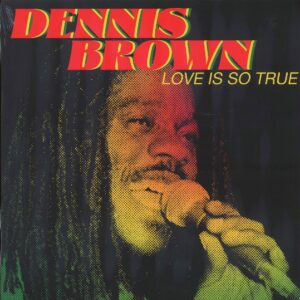 Dennis Brown – Love Is So True18,00€
Dennis Brown – Love Is So True18,00€ -
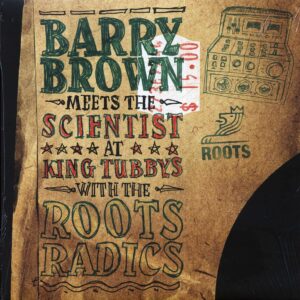 Barry Brown Meets The Scientist at King Tubby’s with the Roots Radics18,00€
Barry Brown Meets The Scientist at King Tubby’s with the Roots Radics18,00€ -
 Eek A Mouse – Peeni Walli / Roots Radics – Version14,50€
Eek A Mouse – Peeni Walli / Roots Radics – Version14,50€ -
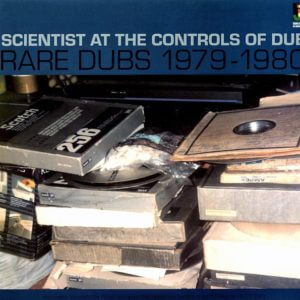 Scientist – Scientist At The Controls Of Dub: Rare Dubs 1979-198020,00€
Scientist – Scientist At The Controls Of Dub: Rare Dubs 1979-198020,00€
Source and cover image: The Rise of Jamaican Dancehall Culture by Beth Lesser

